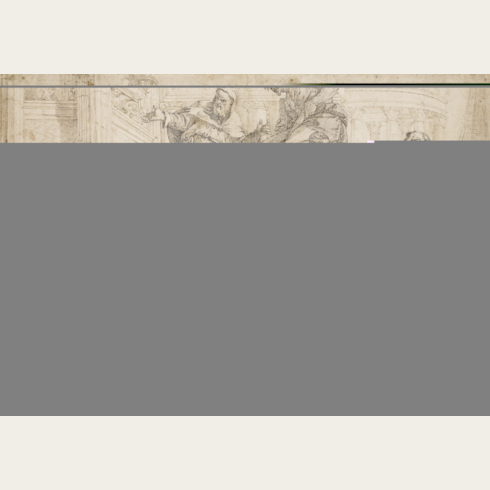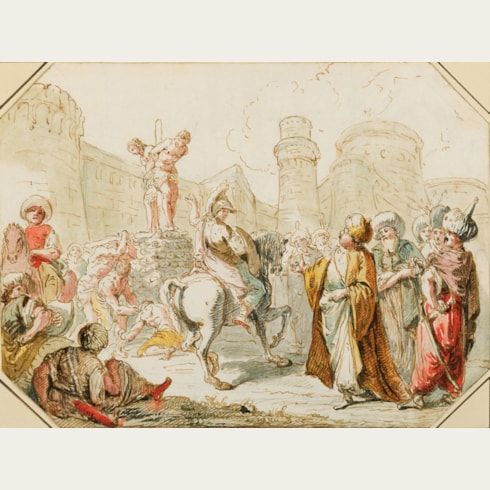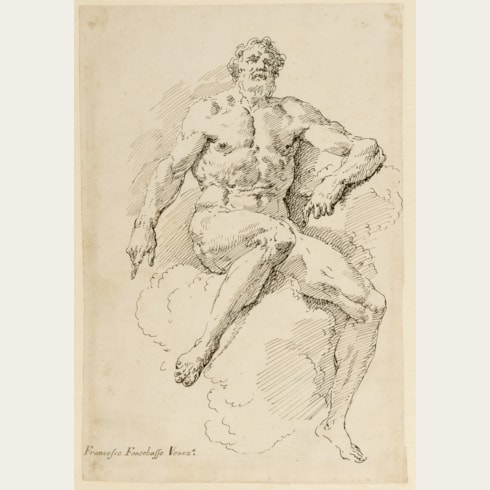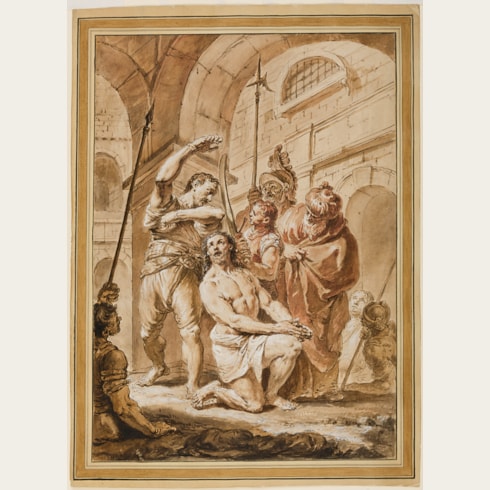Francesco FONTEBASSO
(Venice 1707 - Venice 1769)
Four Studies of Hands
Black chalk, heightened with touches of white chalk, on blue paper, backed.
410 x 263 mm. (16 1/8 x 10 3/8 in.)
410 x 263 mm. (16 1/8 x 10 3/8 in.)
This large sheet is likely to have been intended as a study for a painting - similar hands are found, for example, in Fontebasso’s genre painting of two young boys, in a private collection in Venice - or as a studio exercise, and it is interesting to note here how close Fontebasso’s style is here to the early chalk drawings of Giambattista Tiepolo. A closely related drawing of Four Studies of Hands, of similar technique and dimensions, was on the art market in 2005 and is today in an English private collection, while also comparable is a drawing of five hands formerly in the Italico Brass and Benjamin Sonnenberg collections and sold at auction in New York in 1979, and another sheet of studies of five hands that appeared at auction in Paris in 2019.
Similar studies of hands, sometimes juxtaposed with studies of heads, are also found in other drawings by Fontebasso; one such example is in the Szépmuvèszeti Muzeum in Budapest and another, from the collection of Giancarlo Baroni, was on the art market in New York in 1995. Analogous studies of hands, although in pen and ink, appear on a drawing by Fontebasso in the National Gallery of Art in Washington, D.C.
Similar studies of hands, sometimes juxtaposed with studies of heads, are also found in other drawings by Fontebasso; one such example is in the Szépmuvèszeti Muzeum in Budapest and another, from the collection of Giancarlo Baroni, was on the art market in New York in 1995. Analogous studies of hands, although in pen and ink, appear on a drawing by Fontebasso in the National Gallery of Art in Washington, D.C.
A pupil of Sebastiano Ricci, Francesco Fontebasso spent a brief period of study in Rome before returning to his native Venice, where he produced a series of engravings after Ricci’s paintings. He established his career in Venice, painting several altarpieces for local churches, and was soon in some demand as a fresco painter. In 1734 he decorated the ceiling of the church of the Gesuiti in Venice, and two years later painted a fresco cycle for the church of Santa Maria Annunziata in Trent. Fontebasso worked for members of the Venetian aristocracy such as the Barbarigo family, for whom he painted decorative fresco cycles in the Palazzo Duodo and the Palazzo Barbarigo.
Apart from his success as a fresco painter, Fontebasso made a particular specialty of small-scale devotional easel pictures and modelli, and also worked as an engraver and a designer of book illustrations. From 1756 onwards he was a professor at the Accademia Veneziana, and in 1761 he visited St. Petersburg at the invitation of the Empress Catherine II. Fontebasso remained in Russia for almost two years, completing a number of decorative projects for the Winter Palace in St. Petersburg and other Imperial palaces, as well as painting portraits and genre studies. Although appointed a Professor at the Imperial Academy of Arts, he chose to return to Venice in 1762, where he rose to the position of principe of the Accademia in 1768, shortly before his death.
As Filippo Pedrocco has noted, ‘Fontebasso was a prolific draughtsman and produced sparkling, delicate work in the best tradition of the Venetian Rococo.’1 Like his paintings, his drawings are best described as a synthesis of the manner of his teacher Sebastiano Ricci with the drawings of Fontebasso’s slightly older contemporary, Giambattista Tiepolo. As Pedrocco points out, ‘at different stages of his career his graphic work sometimes reflects the influence of one, sometimes the other. He was not simply a passive interpreter of their work, however, and was capable of achieving a high degree of poetry independent of their influence. Examples can be found among his many ‘finished’ drawings, evidently intended for collectors.’ Most of Fontebasso’s drawings are executed in pen and ink, and while only relatively few may be connected with his paintings, several can be related to the handful of etchings that he made.
Provenance
Dr. Carl Robert Rudolf, London
His posthumous sale, London, Sotheby’s, 4 July 1977, lot 144 (as attributed to Georg Anton Urlaub)
Pietro Scarpa, Venice
Mia Weiner, New York, in 1985
Acquired from her in 1990 by John O’Brien, Charles Town, West Virginia (Lugt 4230).
His posthumous sale, London, Sotheby’s, 4 July 1977, lot 144 (as attributed to Georg Anton Urlaub)
Pietro Scarpa, Venice
Mia Weiner, New York, in 1985
Acquired from her in 1990 by John O’Brien, Charles Town, West Virginia (Lugt 4230).
Literature
Marina Magrini, Francesco Fontebasso: I disegni, Saggi e memorie di storia dell’arte, 1990, p.184, no.113 (not illustrated).
Exhibition
New York, Mia Weiner at Piero Corsini, Inc., Old Master Drawings, 1985, not numbered.










